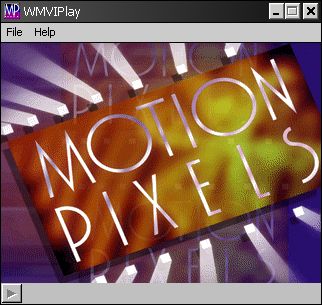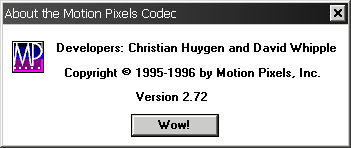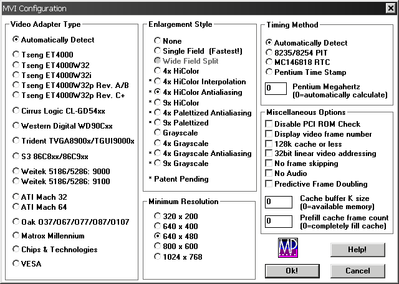emosun wrote:If both gpu's perform the exact same , it means the gpu has no effect on the quality of the video.
Yes, but they likely don't. It's just that you can't get better than full framerate/full quality. One GPU may still need 90% of its capacity, while the other does it at 20%. You can't tell from just looking at the framerate.
emosun wrote:
What you said was this:
emosun wrote:Well it seems that most video cards that have at least 4 or more mb can playback pretty much anything and the real bottleneck is the pentium 1 itself. Being that the cpu has to do all the work loading and unloading the system ram with information quickly.
I took that to mean that "the CPU has to do all the work", as in, you were not factoring in hardware acceleration. The actual bandwidth required for MPEG-compressed video is not very high for a Pentium-class system, considering that MPEG was mainly designed to reduce bandwidth, so video could be stored on relatively low-bandwidth media like a VideoCD, which is 1150 kbit. That amounts to about 1150/8 = ~144 kB/s. Not a big deal for a Pentium-1, where the PCI bus can do about 133 MB/s, and system ram can do even more. You could say it is negligible.
The amount of work that the CPU has to do, is very much dependent on what video card you use.
Eg, a video card that can perform hardware scaling in RGB space will greatly reduce the bandwidth requirements of the CPU, because it only has to decode the video in-place and can send the unscaled data to video memory.
A video card that can performn YUY2->RGB may somewhat reduce the bandwidth requirements (YUY2 packs 4 pixels in 12 bytes, where most cards of the time used 32-bit RGB formats), and also reduces some of the arithmetic workload of the CPU.
A card like the Radeon 8500 can even perform the computationally expensive iDCT operation, meaning the CPU barely has to do anything in terms of decompression.
emosun wrote:But as stated earlier the cpu is whats under load not the gpu.
They are both under some load. Where the balance is exactly, depends on a lot of factors.
emosun wrote:Once again. The gpu's perform the same. Meaning the load is primarily now on the cpu being the limiting factor and not the gpu.
What do you mean with 'perform the same'?
As I said, if both play back a 25 fps video at 25 fps, they 'perform the same', but that doesn't mean much.
A modern system will still 'perform the same', because the video just isn't faster than 25 fps.
Besides, even if neither reaches the 25 fps level, but both get the same framerate (say 20 fps), that still doesn't prove they are running into the same limits.
emosun wrote:So I'm well past the mpeg decoding being any sort of problem as both gpu's can handle it. however i can see the cpu usage hitting 100% and causing the video to lag vs hitting 95% and the video playing smoothly. So I know that the limitation is the cpu.
It would help if people understood that the 'CPU usage' metric in OSes is useless. It doesn't tell you WHAT it's doing. Hence it also measures a loop waiting for the video card to finish decoding the data as '100%'.
It's certainly possible to create an MPEG video that exceeds the bandwidth available in the video acceleration circuit of the GPU. In which case you'd still get lag and '100% CPU', but it's not the CPU that's the problem.
I think in this case you'll find that you'll run into the limits of the Virge much more quickly than the Radeon 8500, given that the 8500 was designed to handle MPEG-2 and DVD-quality video in hardware.


